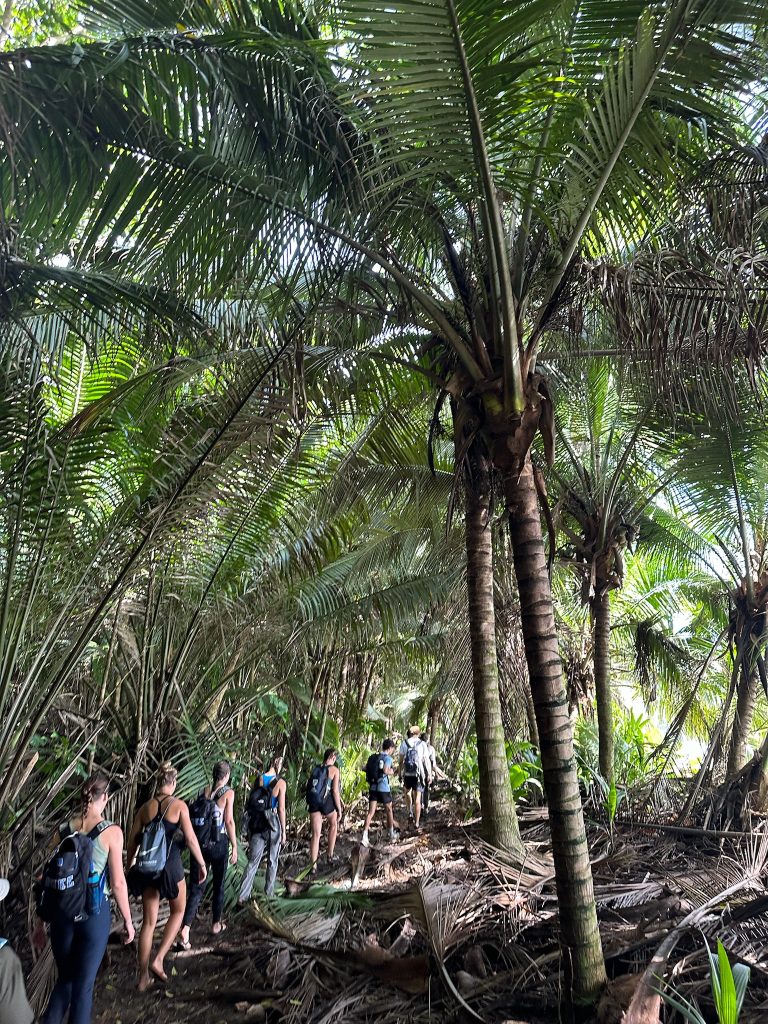
My time in Gandoca, Costa Rica offered an immersive cultural and sustainability-oriented experience. I was welcomed into local Costa Rican communities while engaging in numerous activities, each providing valuable lessons about the successes, struggles, and sacrifices of everyday life.
One moment that particularly resonated with me was learning about the rich and unique culture of Gandoca and how the remoteness shaped the history and way of life of its people. The region is home to numerous banana plantations that are major exporters to the US. While the plantations provided economic opportunities, the plantations also led to significant environmental degradation, including soil and waterway pesticide pollution. Personal recounts from locals who had previously worked as runners on the plantation emphasised the unforgiving, repetitive, and labour-intensive nature of the job. Wages depend on meeting quotas, where workers would run approximately 400 bundles of bananas to the distribution centre to earn around $60 a day. Despite these challenges, many people find time to continue their education at night. One person shared his ambition of becoming a marine scientist by studying in San Jose; however, instead, he chose to return to the village to support his family. I find this exemplifies the selflessness and sacrifice prevalent in the community. This experience made me realise my privilege in being able to pursue my ambitions and study at a world-class university without worrying about the impact on my family.
A lasting memory of mine was the strong sense of community in Gandoca. The locals’ welcoming and friendly nature made us feel part of the community from the start.
A lasting memory of mine was the strong sense of community in Gandoca. The locals’ welcoming and friendly nature made us feel part of the community from the start. Despite numerous differences, we shared stories, jokes and all took part in a soccer tournament where everyone was united by sport regardless of background. This unspoken connection and sense of community was something that was a main topic for reflection for many of us in the group.
Volunteering on a cacao farm, participating in beach cleanups, and hiking all immersed us in a thriving tropical ecosystem. Seeing monkeys, toucans, sloths, snakes, frogs, and baby sea turtles up close is a cherished memory.
Another highlight was experiencing the diverse wildlife. Volunteering on a cacao farm, participating in beach cleanups, and hiking all immersed us in a thriving tropical ecosystem. Seeing monkeys, toucans, sloths, snakes, frogs, and baby sea turtles up close is a cherished memory. Being in the company of knowledgeable and experienced people, we gained a greater appreciation for the role both the wildlife and humanity plays in maintaining the balance of the fragile and biodiverse ecosystem.
However, witnessing the impact of anthropogenic threats like climate change, urbanization, and deforestation on both wildlife and the local community was unsettling. It’s one thing to learn about climate change in a classroom, but quite another to see the effects firsthand. The community recognises the importance of living in harmony with each other and the environment that provides for them. The relationship that Costa Ricans have with the land is a good template for the rest of the world to follow. My time in Gandoca has strengthened my interest in environmental stewardship whilst reinforcing the importance of community engagement in local initiatives.
